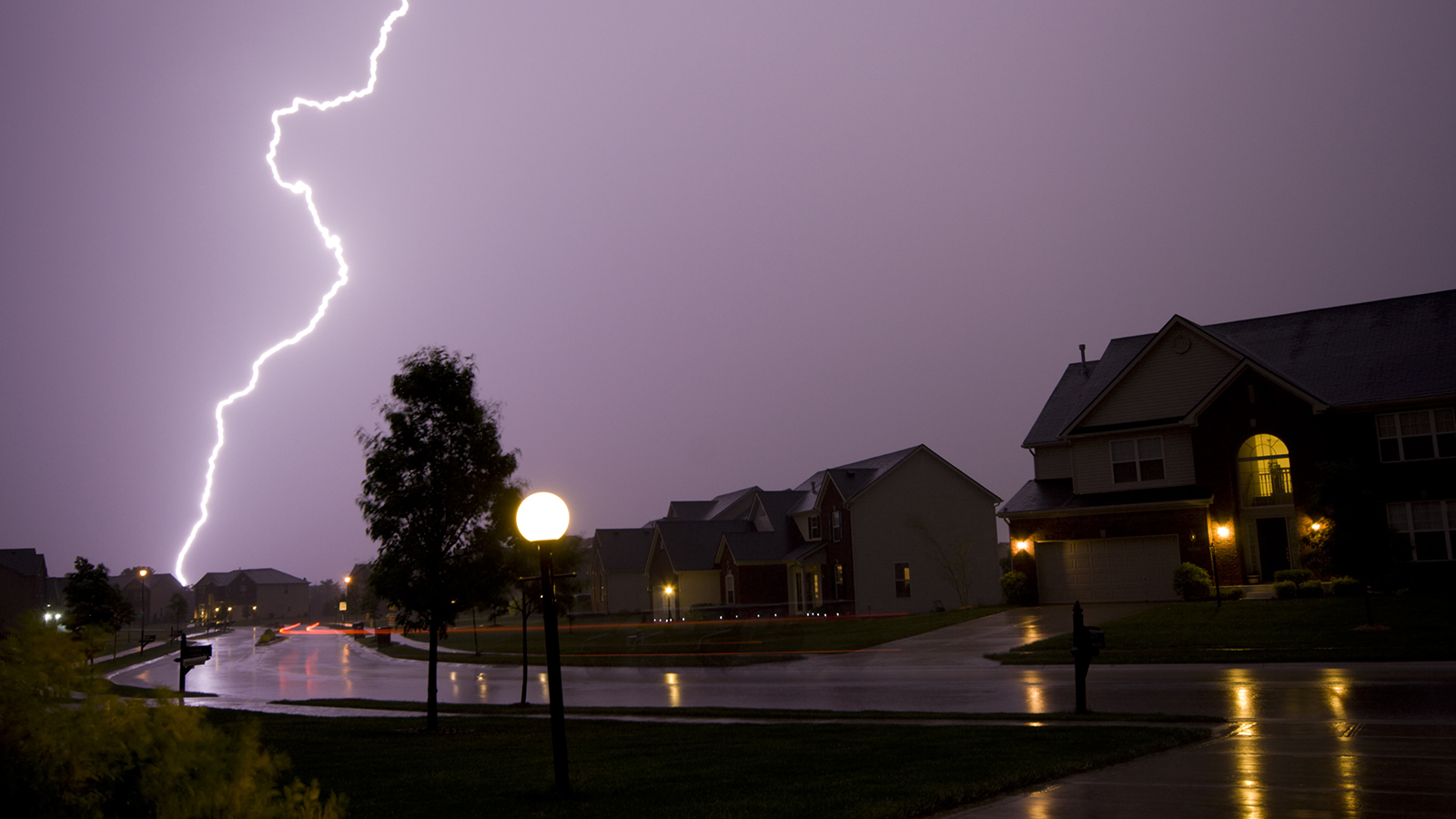Lightning Safety

Lightning incidents are very under-recognized when it comes to weather hazards. Insurance claims against lightning can cost thousands of dollars and cause extreme damage to your property - and in some cases, can even be fatal. Understating lightning and taking proper precautions can help you when a lightning storm arrives.
What exactly is lightning? And what is thunder?
To put it as plainly as possible, lightning is what you see when there’s a sudden discharge of electricity from a cloud. The insanely high heat a lightning bolt produces (it can be up to five times hotter than the surface of the sun) causes the air to expand rapidly, which makes a loud booming sound called thunder.
What are the different types of lightning?
There are three main types of lightning. Two of the three are considered “light-show lightning” in which the lightning never leaves the cloud.
1. Intracloud lightning
2. Cloud-to-cloud lightning
The third type of lightning is what causes physical damage when it strikes.
3. Cloud-to-ground lightning
Types of dangerous lightning strikes:
• Ground strike: this strike shows evidence of burned or charred driveways or roadways. Ground strikes can even dig a trench into the ground. Damages to homes or businesses are likely.
• Tree strike: direct strikes of lightning to a tree can strip the bark right off. This strike can do the damage of a ground strike, but with less energy since the tree was hit first.
• Utility strike: this strike can cause the most damage over a widespread area. This can cause electrical outages which will affect many homes and businesses.
• Direct strike: this strike can cause severe and catastrophic damage. Direct strikes can cause fires to buildings.
Lightning fact:
- Thunder and lightning happen roughly at the same time, but since light travels faster than sound, you see the lighting flash before you hear the thunder.
Protecting yourself against lightning:
Lightning is not something you should mess around with. If you are out and about when thunder and lightning hit, you should take proper precautions and know what to do and where to go.
If you are near shelter, go inside and wait it out. If you are not near shelter and in an open area, you should act quickly by following these actions to reduce your risk:
• Avoid open areas and get off any elevated areas.
• DO NOT lie flat on the ground. You want as minimal contact with the ground as possible. Instead, crouch down in a ball-like position with your head tucked.
• Never shelter under an isolated tree.
• Get away from any body of water.
• Stay away from objects that conduct electricity.
If you are at a sporting event when lightning starts, do not hide under the metal bleachers. Most places will have a lightning protocol, and they will tell you where to shelter. If not, a good place to go is your vehicle to wait out the storm.
Lightning fact:
- About 10-12% of lightning strikes take place when it’s not raining.
Protecting your home against lightning
When it comes to protecting yourself from lightning, you relocate to a safer place to wait it out; but you cannot physically move your house during a thunderstorm. Follow these steps on how to protect your home from lightning.
1. Use a home lightning protection system.
Lightning protection systems redirect the lightning into the ground instead of it flowing through your home’s gas system or electrical wiring. Installing this system can cost anywhere from $100-$3,000 depending on what kind you get. Now, that may seem like a lot of money but considering the average lightning-related claim is around $28,000, you can pick the better deal.
2. Unplug electronics and appliances
When lightning strikes, it can use your home’s electrical wiring system as a path, causing electrical damage to things plugged into the wall. If you know a storm is approaching, unplug any electronic devices or appliances to limit the risk of damaging those items.
3. Install transient voltage surge suppressors
You’re probably wondering, “What if I am not home when a storm hits?” Installing a transient voltage surge (link this article: Transient Voltage Surge Suppressors (raycap.com)) suppressor will protect your electronics from lightning by acting as a cutoff in the event of a surge or electrical power.
4. Check your homeowners and renters insurance coverage
You can take all the precautionary steps you want; however, lightning damage still happens. Make sure your home and renters insurance covers damages caused by lightning, especially if you live in an area that has frequent lightning storms.
Lightning fact:
- Lightning strikes more than eight million times a day worldwide. That’s about 93 times per second. To read more Weird Facts About Lightning Strikes | Reader's Digest
When it comes to protecting yourself and your house, it is better to be safe than sorry. Contact your Alfa® agent today to discuss your home insurance needs!